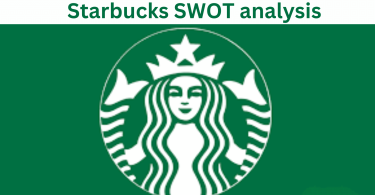In the dynamic landscape of the global logistics industry, conducting a SWOT analysis holds vital significance for giant companies like DHL.
This strategic assessment tool provides DHL management with a comprehensive understanding of the organization’s internal strengths and weaknesses, allowing them to leverage capabilities and address areas for improvement.
Simultaneously, the analysis delves into external factors, unveiling opportunities for growth and potential threats.
In the fast-paced world of shipping and logistics, a meticulous SWOT analysis becomes a compass for DHL, guiding informed decision-making and ensuring a competitive edge in the market.
DHL: A Logistics Powerhouse with a Global Reach
A Legacy of Innovation:
DHL’s story began in 1969 with a vision to revolutionize airfreight forwarding. Founded by three individuals – Adrian Dalsey, Larry Hillblom, and Robert Lynn – the company started by connecting geographically distant markets like San Francisco, Honolulu, and Los Angeles.
Their ambition fueled rapid expansion throughout the following decades, solidifying their presence across continents. In 2002, a historic acquisition by Deutsche Post cemented DHL’s position as the world’s leading logistics company, paving the way for further growth and innovation.
Diverse Services for Diverse Needs:
DHL’s extensive portfolio caters to a wide range of logistics needs. They offer:
- Express Delivery: Time-sensitive domestic and international shipments delivered with speed and reliability.
- Freight Forwarding: Transportation of large cargo by air, sea, or land, ensuring efficient movement of goods globally.
- Supply Chain Management: Comprehensive solutions for managing the entire flow of goods, from origin to destination, offering clients integrated control.
- Contract Logistics: Tailored solutions for specific client needs, including warehousing, distribution, and other value-added services.
- E-commerce Logistics: Specialized solutions for online retailers, supporting their fulfillment and distribution needs in an ever-growing e-commerce landscape.
A Competitive Landscape Demands Strategic Focus:
The logistics industry is fiercely competitive, with established players like FedEx, UPS, DB Schenker, and CEVA Logistics all vying for market share. DHL strategically navigates this competitive landscape by continuously innovating and differentiating its offerings.
They focus on providing integrated solutions and building robust global networks to maintain their leading position.
A Network of Partners Fuels Success:
DHL’s extensive operations rely on a complex network of suppliers who are critical to their success. These suppliers include:
- Transportation Providers: Airlines, shipping lines, and trucking companies form the backbone of their delivery network, ensuring goods reach their destinations efficiently.
- Technology Providers: Companies specializing in logistics software, automation equipment, and communication solutions equip DHL with the tools to optimize operations and provide seamless service.
- Equipment Manufacturers: Manufacturers of trucks, aircraft, containers, and other essential equipment ensure DHL has the necessary resources to carry out its logistics activities.
- Fuel and Energy Suppliers: Fuel providers for vehicles and energy for facilities keep DHL’s operations running smoothly.
Customers Spanning Industries:
DHL’s diverse customer base includes businesses of all sizes and various industries. DHL provides tailored solutions to meet the needs of small businesses, online retailers, large corporations, and government agencies.
Strategies for Continued Growth:
DHL prioritizes several key strategies to sustain its position as a leader in the logistics industry:
- Continuous innovation: Investing in technological advancements and exploring new solutions to enhance efficiency and customer experience.
- Sustainability: Focus on environmentally friendly practices and reduce their carbon footprint throughout their operations.
- Expansion: Strategically expanding their global network and service offerings to cater to a broader range of customers and markets.
Key Figures:
DHL boasts a vast presence with:
- Operations in over 220 countries and territories worldwide.
- Revenue exceeding €81 billion in 2023.
- A workforce of more than 550,000 workers globally.
These figures highlight the immense scale and reach of DHL’s operations, solidifying its position as a leading player in the global logistics landscape.
Now, let’s jump into the SWOT analysis results of DHL!
The internal analysis of DHL
The main goal of an internal analysis for DHL is to gain a deep understanding of its strengths and weaknesses, by evaluating its internal factors.
This self-assessment helps DHL management make informed decisions and develop effective strategies for the future.
The strengths of DHL
According to our investigation, DHL boasts several strengths that give it an edge over its direct competitors:
Global Reach:
- Extensive network: DHL operates in over 220 countries and territories, offering broader geographical coverage. This allows them to handle international deliveries more efficiently and cater to a wider range of clients with global operations.
- Strong presence in emerging markets: DHL holds a strong position in emerging markets like Asia and Africa, giving it a potential advantage as it continues to grow.
Diversified Service Portfolio:
- A more comprehensive range of services: DHL offers a broader range of services than FedEx, including specialized solutions for e-commerce, supply chain management, and contract logistics. This allows them to cater to a more diverse clientele and capture a larger logistics market share.
Cost-effectiveness:
- Economies of scale: Due to its larger size and global presence, DHL might be able to leverage economies of scale to offer more competitive pricing compared to FedEx in certain situations.
Focus on Innovation:
- Investment in technology: DHL invests heavily in technological advancements, such as automation, robotics, and artificial intelligence, to enhance operational efficiency and customer experience. This focus on innovation can give them a competitive edge in the long run.
Additional factors:
- Brand recognition: DHL is a well-established brand with a strong reputation for reliability and quality, which can be an advantage in attracting new customers.
The weaknesses of DHL
Here are some of DHL’s weaknesses compared to its direct competitors like FedEx:
Large size and diverse operations:
While global reach is a strength, DHL’s vast size and various services can lead to complexity in its operations. This can make it challenging to maintain consistent service quality and adapt to changing market conditions as quickly as some competitors.
Brand perception:
While cost-efficiency can be attractive to some customers, it can also lead to a perception of lower quality compared to competitors who emphasize premium services.
Integration challenges:
Over the years, DHL has grown through numerous acquisitions, which can lead to integration challenges and inconsistencies in processes and service delivery across different regions.
Specific service limitations:
While DHL has a robust global presence, its domestic presence within specific regions, like the US, might need to be stronger than competitors like FedEx.
Labor costs:
Depending on the specific location, DHL might face higher labor costs than competitors in certain regions, impacting their pricing strategy.
The external analysis of DHL
The primary objective of conducting an external analysis for DHL is to understand external factors beyond its control that could influence its success.
This analysis helps DHL management in making well-informed decisions regarding its strategy, operations, and future trajectory. The external analysis delves into two main aspects: opportunities and threats.
Let’s move on to DHL’s current and potential opportunities and threats without further ado.
The opportunities of DHL
Opportunities refer to favorable external factors that DHL can leverage to achieve its goals and gain a competitive advantage.
These are factors that arise outside the company’s control but present potential for positive change if exploited strategically.
The global delivery market is brimming with exciting opportunities, driven by several key trends:
E-commerce Boom:
This continues to be a significant driver, with increasing online shopping leading to a surge in parcel deliveries. This presents opportunities for players like DHL to expand e-commerce-specific services and cater to diverse needs.
Emerging Markets:
Rapidly growing economies in Asia, Africa, and Latin America present vast potential for expansion. Companies such as DHL can tap into the rising demand for delivery services in these regions.
Technological Advancements:
Drones, autonomous vehicles, robotics, and artificial intelligence are revolutionizing logistics. Embracing these technologies can optimize operations, improve efficiency, and create new delivery options.
Sustainability:
Growing consumer and regulatory pressure drives the need for sustainable delivery solutions. Companies can capitalize on this by offering eco-friendly packaging, alternative fuel vehicles, and carbon-neutral options.
Last-mile Delivery:
Optimizing the final leg of delivery to customer doorsteps remains a challenge. Innovative solutions like micro-fulfillment centers, intelligent lockers, and crowd-sourced delivery can address this gap.
Personalization:
Customers increasingly expect customized delivery experiences. Offering flexible delivery options, real-time tracking, and personalized communication presents lucrative opportunities.
On-demand Delivery:
Growing demand for instant deliveries within minutes or hours creates opportunities for specialized services catering to fast-paced urban environments.
Subscription Models:
Subscription-based delivery services for everyday essentials or specialized products are gaining traction, offering recurring revenue streams and customer loyalty.
Cross-border Trade:
Simplifying and streamlining cross-border delivery processes, especially with complex regulations, can attract businesses entering new markets.
Collaboration and Partnerships:
Strategic partnerships with other players in the logistics ecosystem, such as retailers or tech companies, can expand reach, offer bundled services, and improve efficiency.
Data-driven Decisions:
Leveraging data analytics to optimize routes, predict demand, and personalize services can provide a significant competitive advantage.
Focus on Customer Experience:
Delivering exceptional customer service through convenient tracking tools, prompt issue resolution, and personalized communication enhances brand loyalty and attracts new customers.
Companies that successfully identify, adapt to, and capitalize on these trends are well-positioned for continued growth and success.
Also, it’s important to know that the market is dynamic, and competition is fierce. Therefore, constant analysis, proactive adaptation, and strategic planning are crucial for turning these opportunities into tangible results.
The threats of DHL
While brimming with opportunities, the global delivery market also faces several significant threats and risks. Here’s an overview:
Rising Costs:
Fuel prices, labor costs, and infrastructure maintenance pressure profit margins. Companies like DHL need to find ways to optimize operations and control costs efficiently.
Intensifying Competition:
Traditional players like DHL face competition from new entrants, e-commerce giants building logistics networks, and tech startups offering innovative solutions.
Economic Fluctuations:
Global economic downturns like the COVID-19 crisis can lead to decreased demand for delivery services, impacting revenue and profitability. Companies need resilience and diversification to weather such storms.
Cybersecurity Threats:
The increasing reliance on technology exposes delivery companies to cyberattacks that can disrupt operations, steal data, and damage reputation. Robust cybersecurity measures are crucial.
Regulatory Changes:
Evolving regulations regarding data privacy, labor laws, and environmental standards can increase compliance costs and operational complexity. Adaptability and proactive engagement with regulatory bodies are key.
Labor Shortages:
Finding and retaining skilled labor, especially drivers, can be challenging in some regions. Investing in workforce development and offering competitive compensation are essential.
Infrastructure Gaps:
Inadequate infrastructure, especially in developing countries, can lead to inefficiencies and delivery delays. Collaborating with governments and investing in infrastructure improvements can mitigate this risk.
Climate Change:
Extreme weather events and natural disasters can disrupt transportation networks and damage infrastructure, impacting delivery capabilities. Building climate resilience and incorporating sustainability practices are crucial.
Geopolitical Issues:
Trade wars, political instability (Houthi attacks in the Red Sea, the war in Ukraine and Palestine), and sanctions can disrupt supply chains and create logistical challenges. Diversifying markets and trade partners can reduce dependence on volatile regions.
Technological Disruption:
While technology offers opportunities, rapid advancements can disrupt existing business models. Companies must be agile and adaptable to embrace new technologies without being left behind.
Data Security and Privacy Concerns:
Customers are increasingly concerned about data security and privacy in the digital age. Implementing robust data protection measures and transparent privacy policies is critical to maintaining trust.
Reputational Risk:
Negative publicity due to delivery delays lost packages, or poor customer service can damage brand reputation and customer loyalty. Investing in service quality and effective communication is essential.
Proactive risk management, strategic planning, and continuous adaptation are essential for companies to navigate these challenges and ensure sustainable growth in the long run.
It’s important to note that the specific threats and their impact can vary depending on the company, region, and market segment. Therefore, a comprehensive risk assessment tailored to the context is crucial for effective mitigation strategies.
SWOT Analysis Matrix of DHL
To summarize the results of the DHL SWOT analysis, we present the following SWOT matrix:

Conclusion
In conclusion, the vitality of the SWOT analysis for DHL must be balanced. As a dynamic player in the ever-evolving logistics sphere, DHL’s success hinges on its ability to adapt swiftly.
Regular updates to the SWOT analysis are imperative, considering the constant shifts in the business environment.
By staying vigilant and reassessing internal strengths, weaknesses, and external opportunities and threats, DHL management ensures the agility necessary to navigate the unpredictable terrain of the logistics industry.
In this era of rapid change, a consistently refreshed SWOT analysis serves as a strategic compass, guiding DHL towards survival and sustained growth and resilience in the face of an ever-fluctuating global landscape.
SWOT Analysis Examples 2024
There is no better way to understand how to conduct a SWOT analysis at your company than with a concrete example.
Below you will find our free, up-to-date, and concrete examples of SWOT analyses of large companies and multinationals conducted in 2024.












Leave a Comment